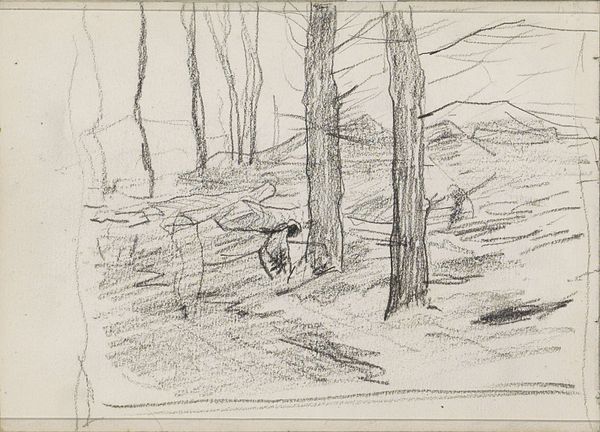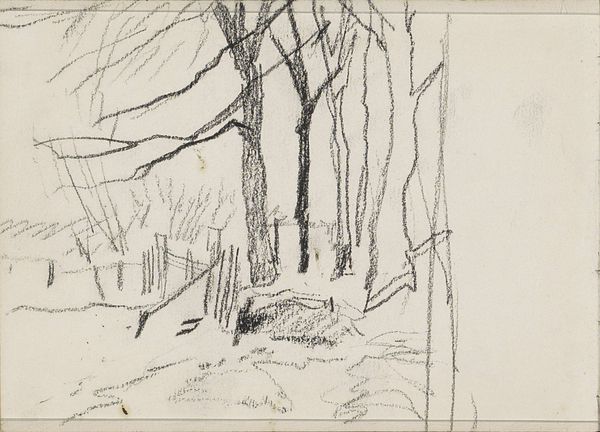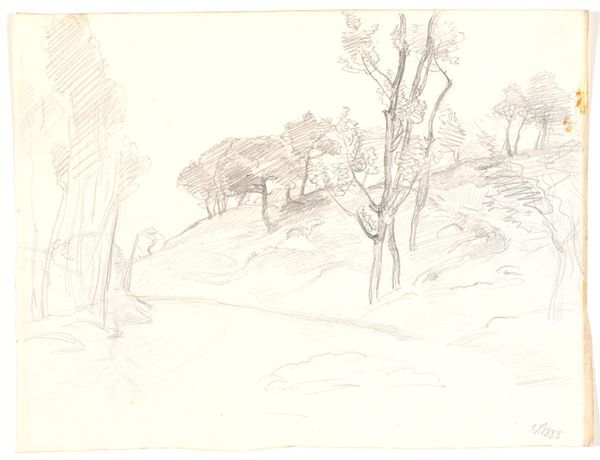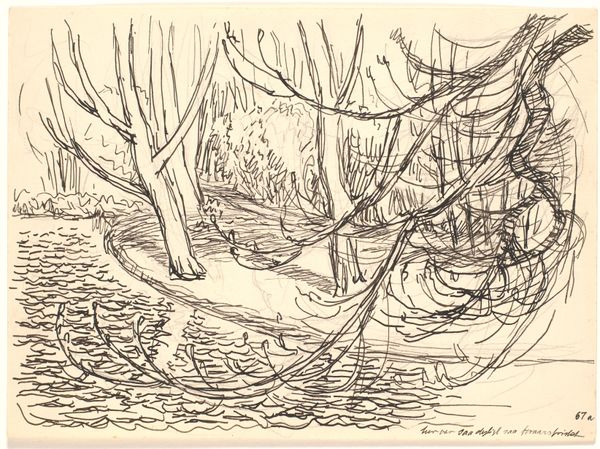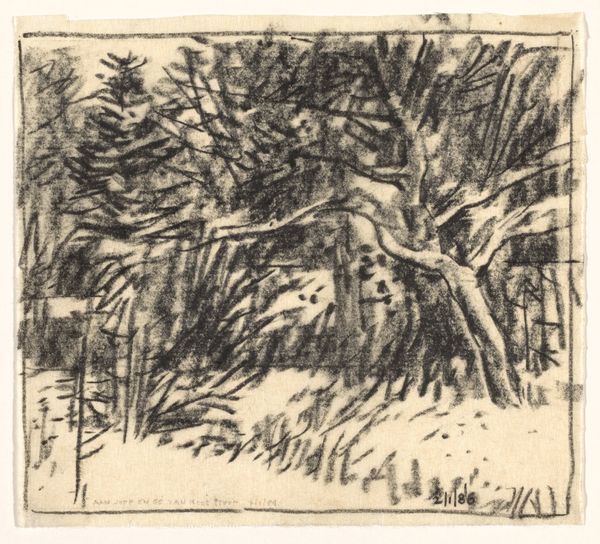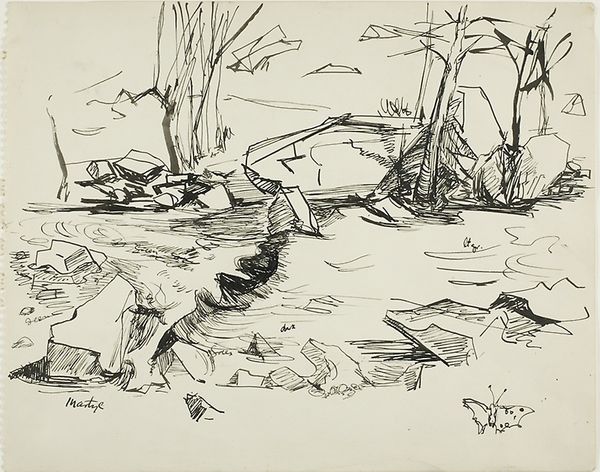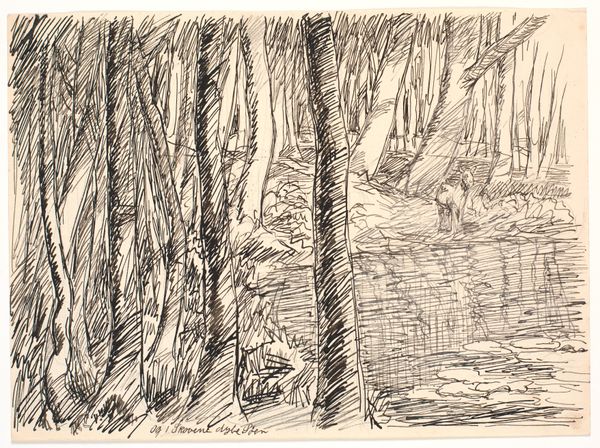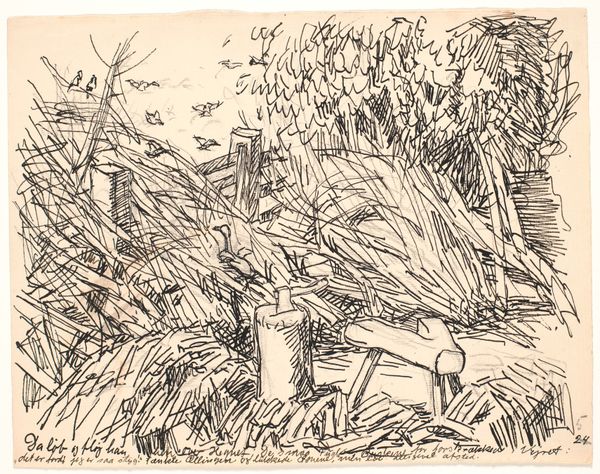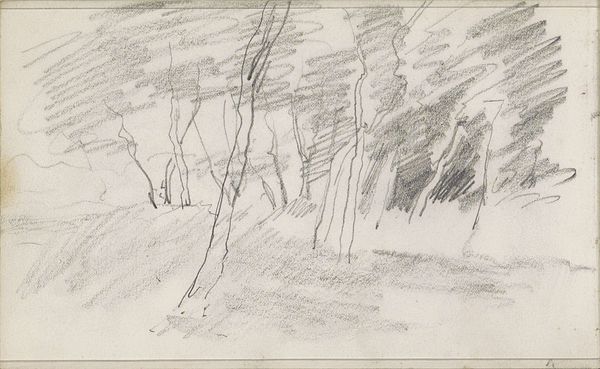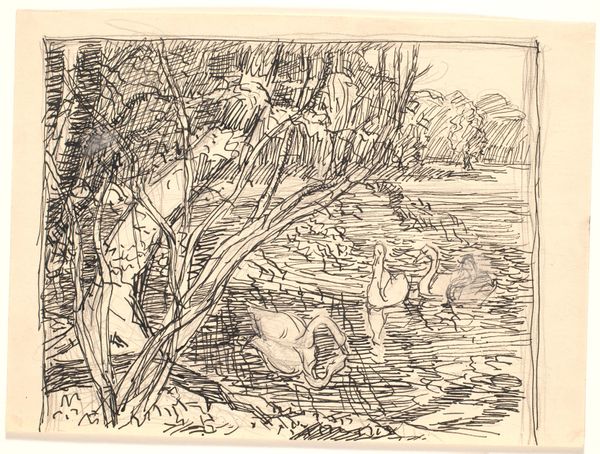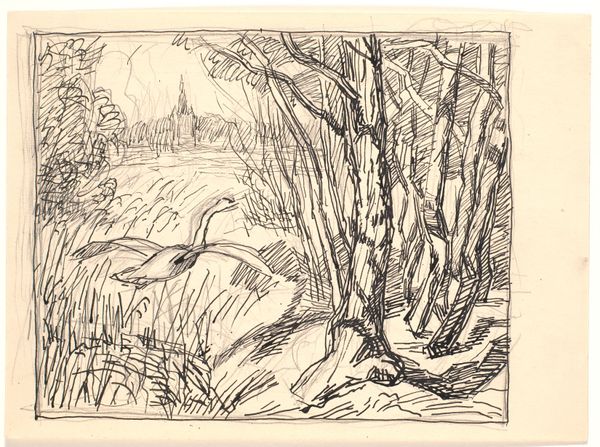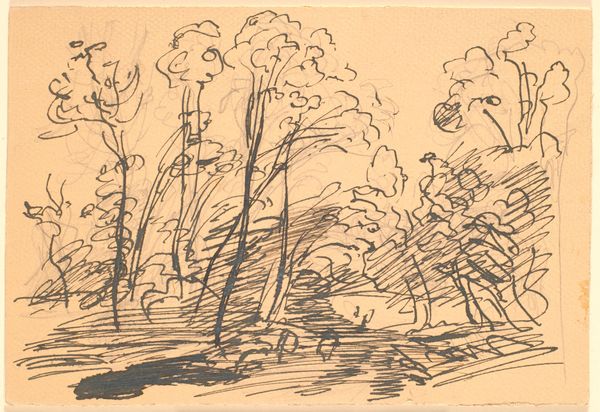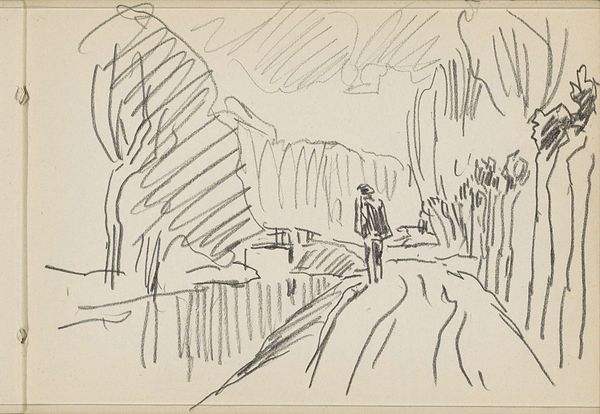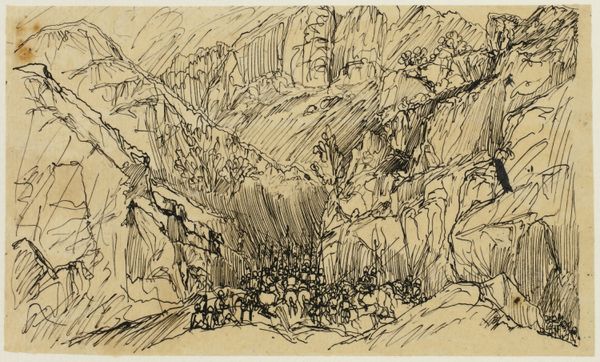
Dimensions: height 183 mm, width 233 mm
Copyright: Rijks Museum: Open Domain
Curator: This ink drawing, attributed to Rik Wouters, is titled "Rand van een bos met wandelaar en paard en wagen," or "Edge of a forest with walker and horse and cart." It's dated somewhere between 1892 and 1916. Editor: My immediate reaction is how dynamic and urgent it feels. The sketchy, almost frenetic lines create this palpable sense of movement. Curator: Yes, those lines! They carry such energy. Notice how Wouters uses them not just to define shape, but to evoke the feeling of sunlight filtering through the trees, dappling the scene. It almost reminds me of ancient Chinese landscape painting where line quality carries spiritual meaning. Editor: Absolutely, and I’d say the content reflects a cultural tension too. On the one hand, there's this seemingly idyllic pastoral scene with the horse and cart. But the stark lines and somewhat obscured figures hint at the disruptions of modernity. Industrialization was changing the landscape irrevocably during that period. Curator: A forest edge is inherently liminal, a space of transition and transformation. The walker too. The iconography of travel and wandering is rich. There's the quest, pilgrimage... But also exile, displacement, the sense of being in between places. Editor: Right. The act of wandering itself was being heavily scrutinized. Think of the debates around the flâneur in Paris at the time. Who has the right to move freely, to observe and experience public space? These weren't neutral questions. Class and gender dynamics always play a significant role. Curator: It's fascinating how seemingly simple lines can hold so much. Each mark contributes to this layering of meaning, reflecting not only the artist’s perspective, but also the societal anxieties bubbling beneath the surface. Editor: This image encourages us to acknowledge how ideas of the rural, the pastoral, are almost always mediated by historical circumstances, power, and privilege. We shouldn't accept seemingly natural images uncritically. Curator: Thank you, that lens is vital. What at first seemed like a pleasant rendering becomes something so much more thought-provoking. Editor: Yes, I think by embracing these difficult questions that art continues to provide pathways into critical self-reflection.
Comments
No comments
Be the first to comment and join the conversation on the ultimate creative platform.
